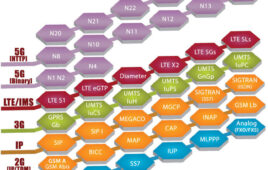Enterprise use of mobile messaging is on the rise despite continuing predictions of its demise. The emergence of OTT platforms has helped companies recognize that SMS, and specifically Application to Person (A2P) messaging, is still the most ubiquitous channel for communicating with customers.
Companies in the travel, retail and banking industries have been using A2P SMS for years to deliver automated notifications such as anti-fraud alerts, balance statements, payment reminders, coupon/savings alerts, withdrawal notifications and reservation confirmations to customers’ mobile phones.
For an example, let’s look at the customer service industry. The recent increase in customer response automation technology (i.e. bots and computer-generated responses) has positively influenced other communication channels, such as short message service (SMS) and voicemail drops. At Tata Communications, we help TCN leverage high speed networks to help their clients deploy a variety of A2P and P2A technology features to shorten agent handle times and reduce caller wait times. When used correctly, businesses can engage customers more effectively, provide faster responses and improve overall customer service.
An opportunity and a challenge
MNOs that want to serve enterprise customers with A2P messaging face a market that’s not only complex, but also frequently insecure. And, while A2P presents an opportunity for MNOs to capture new revenue from enterprise customers, there’s been a surprising lack of commitment throughout the mobile messaging ecosystem to assure secure end-to-end message delivery from the originator to the final customer. This is important because MNOs need to be able to terminate legitimate message traffic and protect their networks from potential fraud and spam traffic.
The lack of action is creating a missed opportunity for the industry. Analyst firm Ovum forecasts A2P messaging to grow to 1.28 trillion messages by 2019, up from 1.16 trillion in 2016. There is an opportunity here, as well as a challenge, which is the need to assure and protect the complex mobile messaging value chain.
Securing the messaging value chain
The A2P messaging value chain involves an array of intermediary companies who process, aggregate and transmit messages on behalf of their customers. These SMS aggregators will usually seek the cheapest routes to send messaging traffic — an approach that’s not always compatible with ensuring quality message termination.
There is, of course, an issue with fraudulent SMS origination. The reality is that while spam messages do generate revenue, if they’re terminated legitimately, the MNO may also face a range of issues including grey routes, SMS bypass and other forms of SMS-based fraud. All can cause significant losses. The impact of grey routing blurs the lines between legitimate and non-legitimate traffic, making it difficult for MNOs to control messaging traffic and monetise A2P messaging.
Indeed, some A2P messages that find their way onto mobile networks are not terminated legitimately at all — a practice referred to as ‘grey routing,’ This sees MNOs completing message termination to their subscribers without receiving compensation. In fact, research indicates that up to 70 percent of MNO networks are subject to this unprofitable grey route traffic.
Although messaging originators have very little interest in the problems that MNOs face, their activities do bring negative impacts. As MNOs take steps to block grey route traffic, it means that marketing campaign messages and customer service alerts are simply blocked from reaching their destination. And while the MNO’s problem is partially solved, a new one rears its head for the originating organizations. They will not always be able to see who received their messages — or, indeed, what percentage of messages were successfully terminated.
There are several ways for MNOs to secure their networks against grey route traffic. These include something as simple as checking their interconnect termination rates and ensuring all their GSM AA.19 interconnect agreements are as up-to-date as possible.
Installing an SMS firewall is another option. This doesn’t mean traffic will automatically be blocked, but instead that it can be filtered and legitimate messages accepted.
Getting it right for the long term
The best approach to assuring enterprise messaging traffic is for all industry parties to agree on a best practice code. This code should detail the type of messages enterprises will generate, how SMS aggregators will route traffic to MNOs, and how MNOs will put in place appropriate processes to allow only legitimate traffic through.
Many solution vendors and trade associations have already learned the hard way that the complexity and diversity of the mobile messaging value chain may make a code like this difficult to enforce.
While this might remain a challenge many years to come, I am confident that a process of evolution, education and adoption of best practice will help reduce, if not totally eliminate, grey route traffic and assure A2P messaging end-to-end. If the industry succeeds, everyone in the value chain will reap the rewards. MNOs will be able to earn more revenue and enterprises will be able to send more messages which actually reach their intended recipients, while mobile subscribers will have the latest information and best deals at their fingertips.
Pathmal Gunawardana is VP, Americas at Tata Communications.




